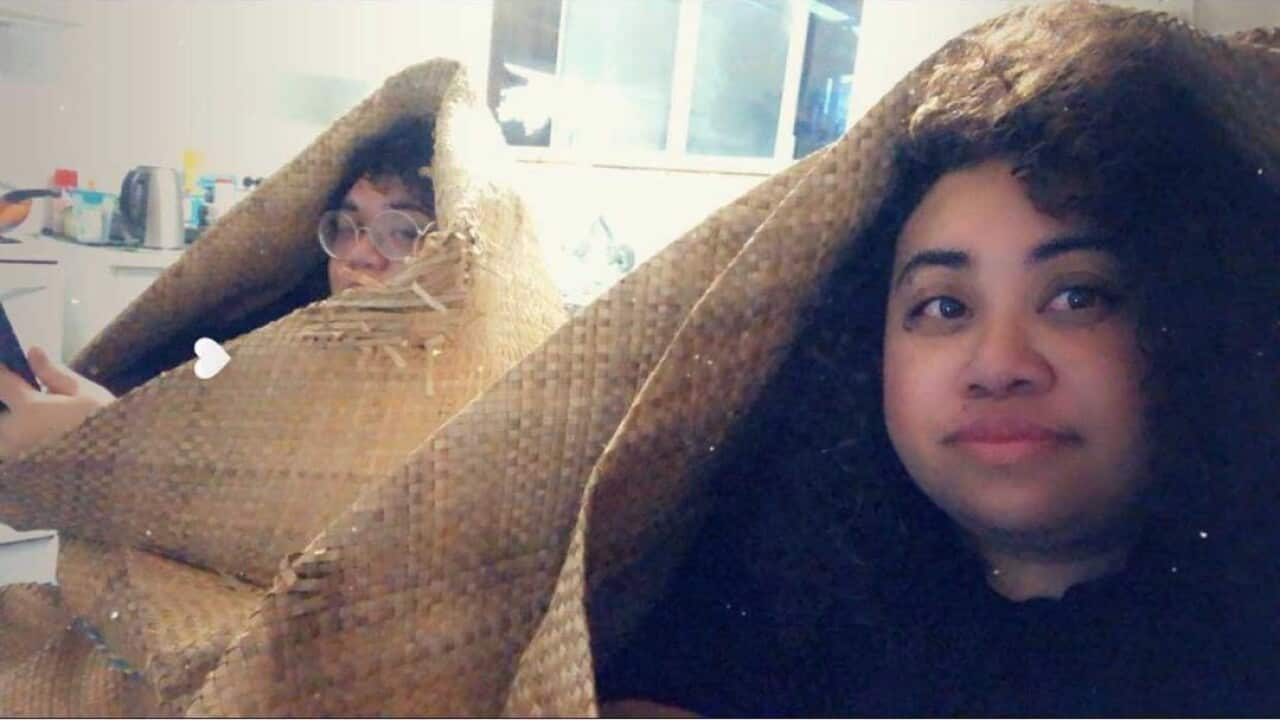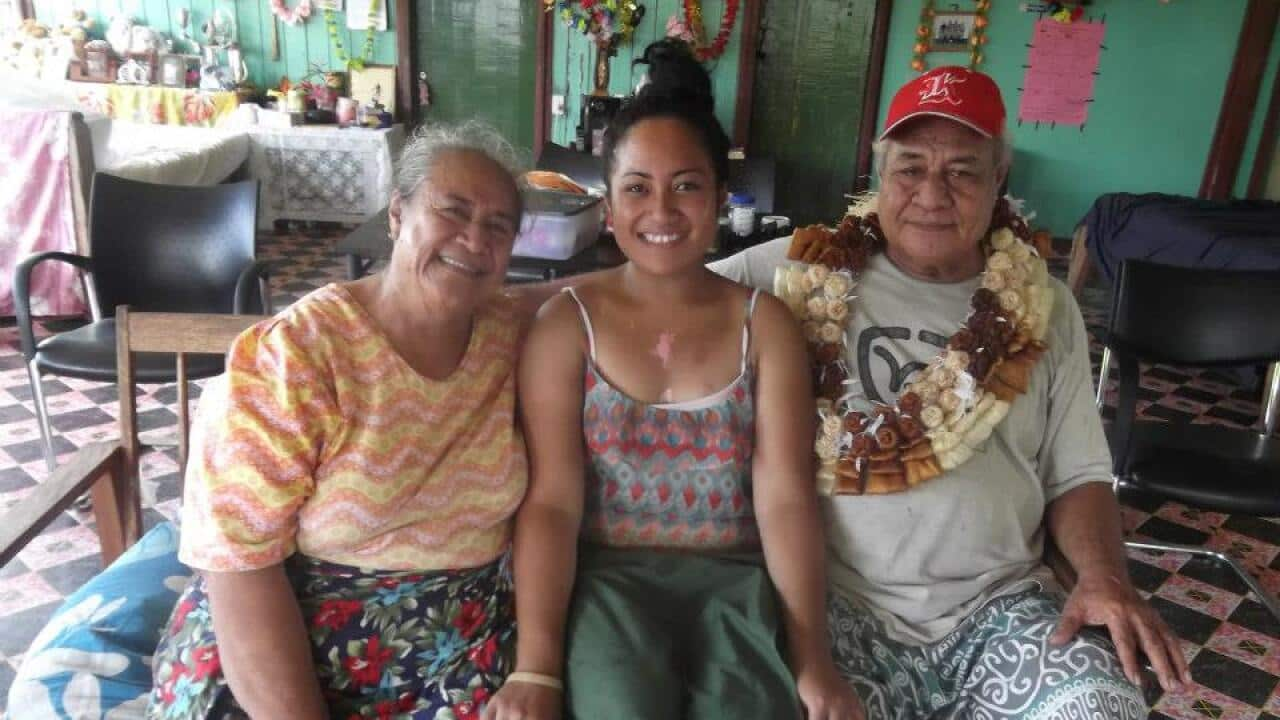OPINION
I grew up among plantation and mining towns in First Nations territories forcibly dedicated to Queen Victoria, simply called Queensland, as well as the far north east of New South Wales. Throughout my childhood every time I introduced myself, I met with the blades of the English-only Australian colony. My name was supposedly weird. Hard to pronounce. When I was really little, I was taught to speak in Sāmoan and Persian, the first languages of my parents. But by the time I was in Year 1 at Bilambil Heights Primary School, I had my tongues and names cut from me.
My parents Soné and Vahid say I came home one day and asked them to stop speaking ‘funny’. The main name my body wore as a child and teenager, Mahziar, was one steeped in histories and tied to places that were speakable if you learnt Persian. MĀH, IZAD, YĀR. Lover or companion of the lunar deity. One of the last Zoroastrian princes of the pre-Islamic Persian empire. This significance was cut up, chewed, and spat out by teachers and classmates alike as Maaahzeeyah. Worse, sometimes it became Mozzie, like mosquito.
My parents Soné and Vahid say I came home one day and asked them to stop speaking ‘funny’
I didn’t then know that Islander ancestors had been measured, dissected, collected, and categorised by racist pseudoscience, relying on ‘’, a century earlier. Mum would make me pull my nose before going to bed each night so it wouldn’t be flat like most of our family who weren’t as visibly mixed as me, my siblings and some of my cousins. My siblings Naysan Sinave and Nadeem Tiafau were born four and five years after me and grew up engaged in sport, literature, design, and music. Influenced as we all were by our late grandmother’s prolific artistry, they finished schooling on the Gold Coast, committed to early morning and late afternoon buses to commute there to be surrounded by classmates from many South West Asian and Great Ocean communities, creating their own cultural pathways towards our ancestry.
As a teenager, I was convinced that I wasn’t destined to become a house painter-naturopath like my dad Vahid and other South West Asian migrants trying to progress in society. I was angry about exclusion of First Peoples and brown people like me from the curriculum and from popular media. Australia offered polarising images of violent bearded men from South West Asia and docile dusky maidens from the Great Ocean as ‘character assassination’ of my parents and the communities I grew up in. To counter all this, I spent as much time as possible in the studio art classroom, and have returned to creativity many times since.
I read books on art movements and world histories in the Tamborine Mountain State High School library. I would protest the Shakespearean plays we had to rehearse, white Australian films we had to study, or novels lamenting the Confederate loss of slaves that were set readings. There was just nothing by First Peoples or racialised people on offer. It was also where I got called 'curry-muncher' the most. I retorted that we mostly ate Italian and Persian at home. Luʻau palusami (coconut milk in taro leaves), steamed green faʻi (bananas) and taʻamū (yam) only came out when my parents made a trip to Woodridge or my cousins came to visit, ingredients in hand. It didn’t matter to the white kids at schools who wouldn’t let up about visible difference.
My parents had visitors almost every Friday night dinner or Saturday lunch for toanaʻi. In the afterglow of the of the 1980s, it was astounding to grow up speaking with artists, musicians, teachers, agriculturalists, seed custodians and travellers from First Peoples and South Sea Islanders of Australia, as well as from Vanuatu, Sri Lanka, Chile, Canada, Bali, Lesotho, Tibet, The Gambia, and Kenya. Contrary to the Sāmoan social system based on faʻaalaoalo, respect for Elders where children don’t join major conversations until much later in life, my parents always encouraged me to join in. These conversations let me know there was a wide world of multilingual peoples out there beyond English-only containment.
Contrary to the Sāmoan social system based on faʻaalaoalo, respect for Elders where children don’t join major conversations until much later in life, my parents always encouraged me to join in.
The table always had Persian dishes like ghormeh sabzi (lamb, herbs and kidney bean stew), lubiā polo (green bean rice with beef and tomatoes), sālād shirāzi (salad with somāgh/sumac), faʻalifu faʻi (slow cooked green bananas in coconut milk), or the vegetarian sapa sui (chop suey) that my mum Soné and aunty Sally trialled together in the 1980s. There is a hilarious divide in Persian diasporas between those tables set with māst-o khiār (cucumber and mint yoghurt) and those without. The Sāmoan equivalent would be those who don’t serve pisupo (corned beef) with freshly roasted talo (taro) and ‘ulu (breadfruit), though some homes are adamant about plain Calrose rice and Pinati’s chicken curry. My aunty and mum were pioneers of making Sāmoan dishes vegetarian, substituting meat with TVP, nutmeat, or adding vegetables unavailable back home.
I spent 2008 on exchange in Lyon, France. I realised there, homesick for Australia and Sāmoa, that I could reinvent myself. I embraced my queer sexuality which had seemed impossible for me mere months before. I legally changed my names from Mahziar Leuli to Léuli Mazyar, honouring my pre-Christian Sāmoan ancestors and my chosen language against English-only control, French. Sidestepping ‘Mazyar’ took the painful reminder of multiple Persian family members being killed by the Islamic fundamentalist regime of Iran out of my daily life. With ‘Léuli’, a clan name carried by my orator uncle and a few cousins, I could forge my own path.
Dr Léuli Eshrāghi is a Sāmoan/Persian/Cantonese interdisciplinary artist, writer, curator and researcher working between Australia and Canada. Eshrāghi was inaugural Horizon/Indigenous Futures postdoctoral fellow at Concordia University, holds a PhD in Curatorial Practice from Monash University, and is Curator of the 2023 TarraWarra Biennial.
This article is part of SBS Voices' Straight Up Islander series, showcasing the work of writers with ancestral ties across Oceania. It has been edited by Winnie Dunn, in partnership with Sweatshop Literacy Movement Inc.

A commissioned illustration for the SBS Voices 'Straight Up Islander' collection by artist Tori-Jay Mordey. Source: Tori-Jay Mordey
Straight Up Islander

Introducing 'Straight Up Islander', a celebration of writers of Oceania





